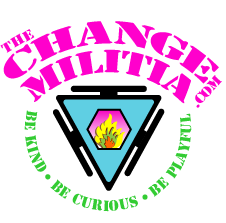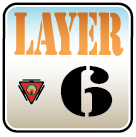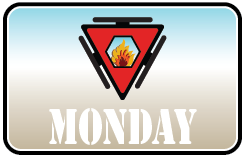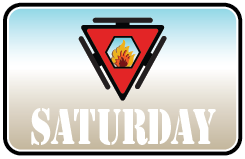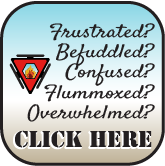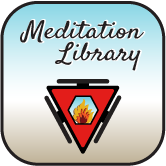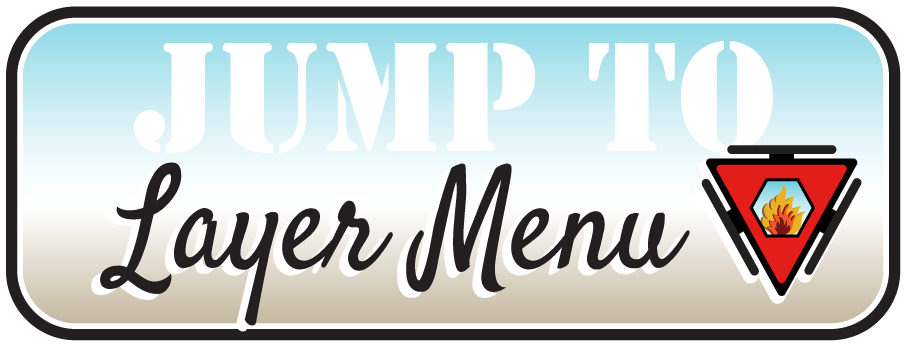Sunday’s Focus:
The practices in Layer Two, Week Four were SquareBreath – Level Four and Sensory Awareness – Level Four. Revisit one or both of them and feel for how you experience them differently. If you only have time for one, I suggest Square Breath.
Sunday’s Concepts
As you review, try to somatically connect with the content. Try to feel the sensations of the impact and influence being presented. Sense, in your body, the foundational nature of the content from your current state of being.
This might get intense, if it starts to feel like too much, take it a little slower. Maybe linger for an extra day or two until if feels like you have integrated the material. These are summaries. If you want to review the entire concepts refer to the applicable layer and week.
Layer Two, Week Four – Concepts
Your mind burns most of the energy it consumes deciding if this moment is subjectively better than some previous moment and what might be better in the next moment. Your personality is the outward display of these cycles of subjectivity.
Your mind starts a motion by having a notion, concocting a potion and then … making a drop into an ocean.
If your personality determines who you are, and your personality is a habit, as you change your habits, you change who you are. As you change who you are, you change the personality of the world around you.
Value is the hypothetical benefit or deficit you assign, the amount of energy you give, consciously or sub-consciously, to potentials or possibilities that you have identified or created. Attachment is the value you give a person, place, thing, belief, pattern, or idea coupled with the amount of suffering you fear if it is lost.
You create attachments to mitigate the potential for change in your environment.
Your subconscious mind takes the value you have created (and your attachment to that value) and begins to create stories about why you shouldn’t move, change, or grow.
If something has value to you, it is limiting or draining your energy in some way. You give something life by creating a story about how it is important and how you would suffer if it was gone. You create a fictional future and then invest in that fiction. The degree to which you energize your stories is the amount they drain your vitality.
Beliefs come into play when you are uncomfortable or fearful. You fall on your beliefs to descend back to your familiar zone. You pull on your attachments to burn energy. You limit your reality and then struggle toward that limited reality, so that your fictionality can stay an actuality.
All attachments and beliefs function to limit or promote fear. Examine your beliefs for the fear they conceal. Investigate your attachments for the doors they close and the corridors they shunt you to.
When you understand the fear at the core of your beliefs and the root cause of your attachments, you can begin to devalue them. As they lose value, attachment is reduced. When they lose all value, they lose all attachment. Every belief you have, every limiting thought, pattern, addiction, or dysfunction can be devalued and let go.
How much energy do your beliefs require to continue to exist? Facts and direct personal experience require zero energy; use that as a gauge. How hard do you have to convince yourself to continue to believe?
Layer Two, Week Four – Focus
Investigate your personality. How do you respond and react to the goings on around you? What are your normals? If someone describes your personality, what do you think they would say? What ruts are you in? What is your favorite excuse? Why do you quit?
What events in your past still influence what you do today? How often to you compare your current situation to some past event or future possibility? How do those events limit or motivate you? How could your life unfold differently if you didn’t allow those events to influence you?
As you go through your day, begin to identify the value you place on people, things, ideas, and potentials. How attached are you? Feel for your attachments. Track your fear of loss. How does your attachment to things correspond to your fear of loss? Identify everything in your life and wonder what it would be like to be without it. Which loss, of those people, things, or situations, generates the most fear?
Which of your habits are you most attached to? Identify your habits and feel into what it would be like to do something differently. Which habit feels the hardest to imagine living without?
Monday’s Focus
The practices in Layer Three, Week One were Adductor Pulse and Zero, Not Zero. Revisit one or both and feel for how you experience them differently. If you only have time for one, I suggest Zero, Not Zero.
Monday’s Concepts
Layer Three, Week One – Concepts
Your beliefs are where you hide, disguise, and obfuscate your fears. Look to the heart of every always and never, your absolutes, and you will find a belief that limits you.
All beliefs are limiting. They have to be. Beliefs give a framework, a box that delineates what is inside and what is outside. Either things fit into your belief or they don’t. Everything that doesn’t is given a limited or negative value. Options and opportunities outside of your beliefs become either improbable or inconceivable. They are discounted. And similarly, things that fall within your beliefs are given priority based on your past experience or predisposition but without current merit.
Beliefs make you lean in habitual directions. They keep you from being balanced, limit your productivity, and lower your efficiency. Do you accept that it is your right to self-determine your beliefs? Have you allowed yourself that authority? Accepting and allowing that you have the right to determine what and how you believe is the first step toward self-responsibility and self-determination.
Personal responsibility is your ability to decide and your capability to respond. When you take personal responsibility, you will empower yourself, stop blaming others, and unlimit your opportunities. Personal responsibility keeps you from making demands and having expectations of others. The primary entryway into personal responsibility is self-evaluation.
Your sub-conscious mind constantly self-evaluates but rarely makes that information conscious. It determines possible threats and then whispers the associated fears into your head. Making your evaluations conscious starts with a decision. If you aren’t committed, your subconscious mind will continue to make the evaluations. Subconscious evaluations almost always lead to habitual reactions. Habitual reactions are rarely the most productive, efficient, or beneficial. And habitual reactions and distractions almost never bring about beneficial change.
Distractions will fall into three major categories, internal, external, and relational. Internal distractions will include your thoughts, feelings, and sensations, (gross and subtle). External distractions will include everything outside of your skin: people, circumstances, the environment, and things like social media (things that exist but don’t intrude on their own). Relational distractions are ones that transit from internal to external or external to internal (things that intrude).
Relational distractions include when someone grabs your arm, calls your name, creates a scene, or something diverts your attention by projecting energy into your space. Getting into a hot car is an example. You get in and the trapped heat saturates you.
Layer Three, Week One – Focus
Take stock of your internal authority. How large and in charge do you feel? To whom or what do you regularly defer? As you make your way through the next few days, question authority. Spend the day examining who you allow to be responsible for your decisions, happiness, distractions, trajectory, schedule, and fulfillment.
Evaluate your presence by tracking your internal distractions. Look for your patterns. Look for frequency and value. Which internal distractions happen the most often and which are the hardest to ignore?
Track your external and relational distractions. What lures you away from your intentions, trajectories, or actions? Find your habitual and familiar interactions that take you out of your groove and then begin to choose, decide, not to be distracted.
What causes you to react? Every reaction begins with a distraction. The value you give your distractions is directly related to the degree of your reaction. When you can lower the value of your distractions, you lower the degree of your reactions.
Tuesday’s Focus
The practices in Layer Three, Week Two were Tolerate, Can’t Tolerate and Spiral Hips. Revisit one or both of them and feel for how you experience them differently. If you only have time for one, I suggest Tolerate, Can’t Tolerate.
Tuesday’s Concepts
Layer Three – Week Two – Concepts
Reducing distractions starts with understanding their reality. Distractions are the primary tool your subconscious mind uses to keep you in a familiar range, to limit your growth, and to keep you from exploring what lies beyond your familiar horizons. Distractions are given an inordinate, even exorbitant, amount of your attention.
Observe and consider the distractions that pull your attention away from your intentions and you will see that they are almost always valueless. Sometimes distractions are conscious but most of the time your subconscious mind is driving the bus. It looks for distractions.
Your subconscious mind tries to get your attention by highlighting things in your internal and external environment that you have previously given value to. The key isn’t what the nature of your distraction is; it is that it will always be out of line with your current intention or task.
Distractions are diverting, they bleed off energy. Your distractions pull you away from what you are doing. What you are doing generates energy and builds momentum. As the energy builds, you get energized beyond what is normal and that is disconcerting to your subconscious mind … and it starts looking for distractions.
You get distracted when you are out of balance. How out of balance you are will determine the level of the resulting distraction. Interesting, isn’t it? You get distracted to the degree you are out of balance. Your imbalance will be in one or more of your energy bodies (physical, mental, emotional, or subtle). Usually, the imbalance will occur when one of your bodies is more energized than the others. Energy, in excess of what is typical for you, triggers subconscious feelings of overwhelm and then your subconscious mind starts looking for ways to diffuse or bleed off some of that excess.
It starts by looking for distractions. When it finds something to tempt your conscious mind, it latches on and starts looking for ways to make the distraction seem important.
You get too and your mind starts looking for ways to diffuse. Once you are distracted, your subconscious mind will try to keep you distracted, try to bleed off more energy. It might do this by adding value to the current distraction or by flinging new distractions at you. As you allow yourself to add value to distractions, you increase your attachment to them. They get harder to let go of or ignore the next time.
Layer Three – Week Two – Focus
As you find yourself distracted, feel how completely you immerse yourself in them. When you check Facebook, are you aware of anything else? When you check the weather for the third time (I am guilty of this), can you hear the birds sing? Catch yourself, and begin to understand the all-consuming nature of distractions.
Record the number of times you look at your phone, email, or social media. Ask yourself how important, consequential, essential, influential, or significant the distraction was. How much actual value do distractions add to your life?
When you catch yourself in distraction, calculate how much mental, emotional, or physical energy you have spent. Contemplate what you could have accomplished if you hadn’t allowed yourself to be distracted.
See if you can discern when your subconscious mind is trying to add importance to increase imbalance. What stories does your mind tell you about how relevant, pertinent, and critical the distraction is?
Feel into your energy when you find yourself distracted. Feel your mental body, your emotional body, your physical body, and your levels of energy. Can you feel the imbalance?
When you find yourself distracted, feel how hard it is to let go and get back to what you were doing. Feel for the difference between the pull to remain and the resistance to leave. The pull to remain will probably have a feeling of comfort and familiarity. The resistance to leave will have a quality of apprehension and anxiety.
Wednesday’s Focus The practices in Layer Three, Week Three were Slow Motion Joint Articulation and Squat. Revisit one or both and feel for how you experience them differently. If you only have time for one, I suggest Slow Motion Joint Articulation.
Wednesday’s Concepts
Layer Three – Week Three – Concepts
Let’s define balance as the place of optimum health in any given moment. And let’s define health as the place of optimum growth, function, fluidity, happiness, and fulfillment.
If balance is the place of optimum health and optimum health includes growth; your balance point will change, it will evolve as you grow. For example: if you are a runner and you run consistently, there will be a distance and speed that is optimal, a balance point between maximum benefit and overuse injury. As you progress, that distance and speed will change.
In every relationship, there is a balance point between autonomy and partnership. In your career, there is a balance point between the hours you work, your pay, and your responsibilities. Parenting gives you endless opportunities to balance mothering and smothering, independence and authority, and being supportive or controlling. Everything has a balance point and that point will always be fluid.
Generally, five things influence your overall balance: your physical body, emotional body, mental body, subtle body and your environment. Each body influences every other body. And each body contributes to your overall balance.
Your emotions will also have a dramatic effect on your physical body, mental body, subtle body, and your environment. Optimal physical and mental health cannot exist without emotional balance.
Your mental balance is largely determined by how much energy your subconscious mind consumes.
The balance and imbalance of your subtle body is much more fluid. Your subtle body includes or encompasses the energy of your other bodies and the deeper layers, which would include your electromagnetic field, chakras, auras, meridians, Prana, Chi, Hara, intentions, potential, beliefs, relational cords, and soul. When your subtle body is out of balance, it restricts the flow of energy through and between the other bodies. It is also very habitual, defaulting to established and familiar patterns. (Meditation can be a powerful balancing agent for your subtle body.)
Overwhelm, anxiety, and stress all result from an overactive subconscious mind and a subtle body that is out of balance. Creating, maintaining, and gaining an increased awareness of your balance points is the solution to stress.
Understanding the workings of your subconscious mind, limiting its influence, and lowering its energy consumption will eliminate all feelings of overwhelm. Monitoring and directing the energy flows of your subtle body will allow you to disperse any anxiety that arises.
Your conscious mind, on the other hand, burns very little energy and is rarely out of balance. As you teach your conscious mind to wrestle control away from your subconscious mind, your fatigue will vanish.
Layer Three – Week Three – Focus
Think about your intentions, aspirations, and trajectory for optimum health, success, relationship, fulfillment, and fun. Ask yourself where your life is in-line and out of line with the optimal. Be honest; don’t qualify your answer with arguments about time, resources, or opportunities.
Balanced will feel centered, focused, energized, and present. Unbalanced will be everything else. Begin to identify how, where, when, with whom, and to what degree you are typically unbalanced.
Where in your body do you feel balance and unbalanced the most? Feel for the transitions. Remember, you are identifying sensations, not emotions or thought patterns. Sensations will be words like hot, cold, tight, sharp, dull, deflated, and clammy. Click here to download a big list of sensations.
When you are stressed or overwhelmed, try to identify the gross imbalance. Check in with each of your bodies and feel for anomalies. Which body seems to be overcharged? Undercharged? Stagnant? Refer to your list of energy configurations. Start with your mental body; the overwhelming majority of the time it will be the culprit.
As you identify with the sensation and experience of being balanced (or more balanced than is typical for you), ask yourself what you might do to increase or amplify that sensation and experience.
Thursday’s Focus
The practices in Layer Two, Week One were Edges of the Breath and No Sweat, Sweat. Revisit one or both. Feel for how you experience them differently. If you only have time for one, my suggestion would be No Sweat, Sweat.
Thursday’s Concepts
Layer Three – Week Four – Concepts
The typical progression/cycle that leads to your non-beneficial habits, failures, and dysfunctions is expansion – discomfort – trigger – distraction – imbalance – reaction – compensation – fatigue – stress – overwhelm – dysfunction.
This cycle is why you get sick, injured, lazy, angry, depressed, drunk, high, divorced, fat, and unkind. Let’s break down the components of these cycles and give you some tools to make different choices. We talked about distraction. We discussed imbalance. Now let’s talk about reactions and compensations.
Reactions are movements instigated by your subconscious mind. Reactions will always leave you less vital. They drain your energy or have a negative return on your energetic investment (you get less back than you put in). Everything you do without a conscious decision is a reaction. Getting angry, offended, fearful, or elated are all usually reactions. An overwhelming majority of what you do is a reaction.
Compensations include mental and emotional things like stress, blame, resignation, jealousy, frustration, impatience, comparison, disconnection, anger, sadness, grief, awe, excitement, detachment, and every variety of fear. Physical compensations include tension, addictions, food, nail biting, foot tapping, gesturing, sex, exercise, and napping. Yes, even napping.
Remember, this isn’t about good and bad, right or wrong or negatively judging your imbalances, reactions, and compensations; it is about gaining the awareness that your energy and vitality are being compromised by what you habitually do. Your reactions and compensations are draining you.
Fatigue can also shift from one body to another as the cycle pulls energy from everywhere to fuel the on-going reactions and compensations. That is why you feel physically exhausted after doing your taxes, negotiating with a car salesman or when your two-year-old is screaming in the aisle of the Wal-Mart because he can’t have a four-foot-long Tootsie Roll.
Here is an example of the progression as a recap. (expansion – discomfort – trigger – distraction – imbalance – reaction – compensation – fatigue – stress – overwhelm – dysfunction)
You are a runner. You go for a run, you’re having a great run (expansion), your energy builds to a point (discomfort) where your subconscious mind starts to worry that you are over-energized (trigger). You start mentally or emotionally obsessing on something (distraction) and because of your worrying, your energy shifts out of your lower body into your head (imbalance). You run along and don’t notice an obstacle, which you then trip over.
Your body reflexively over-contracts (reaction) to keep you from falling resulting in a pulled muscle. You continue to run by favoring the pulled muscle and letting other muscles do most of the work (compensation). One part of your mind is telling your healthy muscles that they need to step-up and help the injured muscles. Another part of your mind is trying to convince the muscles that they are being unfairly targeted.
Isometrically pushed, pulled and over-used (fatigue); the healthy muscles start to feel tension, strain, and anxiety (stress) until they cramp (overwhelm). If this goes on for long enough, the previously healthy muscles, or the structures that attach to (tendons, joints, appendages), get over-worked to the point of injury (dysfunction).
Once you are injured (dysfunctional), you start the sequence again but from the compromised or impaired place. You spiral downward.
Between good and bad, right and wrong, typical and atypical, exists a place of transition, a tolerable but uncomfortable range. Transitions are defined by the shift that occurs from okay to no longer okay. Your transitions are unstable, fluctuating and mutable. (Review the Zero, Non-zero movements as a physical example of this) These transitional ranges are what your subconscious mind uses to put your finger on the triggers of your distractions. They become the signal, the lights that flash and alarms that wail. The transition from one stage of the progression to the next is brought on by discomfort.
When you can discern the beginning and end of your range, you will begin to feel the edges of your edges, the expansive quickening. Each of your bodies will have its own transitional range and edge. Your mental range will be different than your emotional or physical range. Each range will affect every other range. For me, when I am in the range I call hungry, I get mentally scattered and emotionally stagnant. My energy gets frenetic and I disconnect from my environment and the people in it.
Getting to know your transitional ranges will allow you to identify when you are approaching the energy levels (expansive quickening) that lead to the triggers for your distractions. When you can bring awareness to those energy levels you can fundamentally change your relationship with them.
Layer Three – Week Four – Focus
Catch yourself in your reactions and compensations and then reflect on your energy configuration just before you reacted and compensated. What was your configuration and what was your energy level? See if you can feel how you are less vital and energized as a result of your reactions and compensations.
Increase your awareness of your transitions and the range of your transitions. What does it feel like when you move from expansion to distraction? See if you can feel what being expanded feels like.
Feel for your edges, the place of increased vitality preceding your reactions and compensations. Edges are marked by some level of discomfort, a burgeoning of energy, and feeling like you are on the verge of the urge to purge. Your edges will also be felt in degrees. You will have a soft edge that is probably tolerable all the way up to a hard edge where things start to feel like life and death.
Friday’s Focus
The practices in Layer Four, Week One were Folding Compensation, and Hanging in Neutral. Revisit one or both and feel for how you experience them differently. If you only have time for one, my suggestion would be to watch the Hanging in Neutral again.
Friday’s Concepts
Layer Four – Week One – Concepts
The first key to staying in balanced expansion is to learn the inner workings of the balancing parts.
Compensation is why staying balanced can feel so extremely fatiguing. Do the Leg Swing and Folding Compensation movements and you will feel just how much more you need to physically compensate when you swing your leg aggressively and how much more energy you exert when you swing or bend forward.
The biggest emotional compensation is fear. Fear is the compensation vehicle your subconscious mind uses to compel you to limit, distance, or quit. Fear uses compensation to hide you from your actual potential. It tries to keep you firmly rooted in your familiar or habitual potential.
Distancing is probably your second most used emotional compensation. When you create, maintain, instigate, or allow distance from your relationship to others, yourself, or your environment you reduce your chances of success, fulfillment, and happiness. When you distance, you are limiting the degree to which you are willing to be present.
You compensate for your discomfort by pushing or pulling away. You get big, powerful, and energized to the degree you allow yourself to be intimate. Intimacy, transparency, and connection are incredibly powerful and expanding. When expansion happens, your subconscious mind goes along for a while until you get too big for its comfort and then it starts to implement your habitual patterns of distancing. Maybe you space out, get distracted, or say something that will trigger your partner to also distance.
You are trying to minimize your fear, emotionally compensate, by creating distance anytime you are sarcastic, critical, demanding, demeaning, dismissing, or passive aggressive with your partner, family, friends, co-workers, or people you encounter.
You will find that you are fearful of something, usually too much intimacy, truthfulness, or connection. You get afraid of being yourself (to a degree that is outside of what is typical) and you shrink … or you jostle, nudge, or pressure others into moving away.
Shrinking and pushing people away requires a lot of energy. After you push, you have less emotional energy reserves. You are less. If some or all of your personal interactions are exhausting … now you know why. If relationship feels hard, it is because you are making it hard by establishing, monitoring, and maintaining a preset distance, emotionally compensating for your fear of your own grandeur and potential.
All emotional compensations will also have multiple mental compensations. When you are distancing emotionally yourself you think about the past, present, and future possibilities, ramifications, and justifications of the story, drama, or fear. The thinking adds to your distancing. You are less present to the degree you are mentally distracted
Let’s talk about your subtle body: your life force, energy, prana, chi, juju, or mojo. Every compensation (mental, emotional, and physical) not only drains your energy but it unbalances it. When you think, your energy goes to your head. When you get emotional, the energy goes to the body area associated with that emotion. As you add value and complexity to your emotions and thoughts, they increasingly unbalance you.
When your energy is diffused, compressed, unbalanced, or frenetic, it doesn’t flow. It gets stuck and that stuckness lowers your ability to act, respond, and create. So, the key is to not diffuse and compress, to stay balanced and not allow your energy to get frenetic.
Here is the second part of the compensation cost. After you compensate you must spend energy to get you back to where you were before you compensated, effectively doubling the energy expenditure.
Compensations are what your do when you allow yourself to be distracted. They take you out of balance, cost you energy, and limit your potential. As you can find your compensations, identify your distractions, and then stop doing them, you will find yourself with a lot more energy, much less stress, and everything in your life will feel easier.
Layer Four, Week One – Focus
Take any one of your compensations and see if you can identify some of the ingredients. Start with the mental. What was the primary reason you compensated? Most of the reasons you compensate aren’t factual, they are fear based.
Emotional compensations are a little harder to identify. They will usually involve qualifiers or some sort of mitigation. The energy of emotional compensations will moderate, diminish, or blunt the impact of what you are feeling or the feeling behind what you are saying.
Environmental compensations will be how you maintain a comfortable distance from your environment and the people in it. Identify what your comfortable personal space is and how that changes with different people and situations.
Track your physical and emotional distance and how it changes based upon people and settings. Your distancing will have a recognizable feeling. It will change with every person and be as distinctive as his or her voice, smell, and appearance.
Begin to be aware of how you limit your interactions, intimacy, and connections. How do you only partially express your essence, mojo, magnificence, kindness, happiness, affection, empathy, and godliness? After you increase your awareness of how you limit yourself, ask yourself why, ask yourself what you are afraid of, and then try something outside of your current normal.
Saturday’s Focus
The practices in Layer Four, Week Two were Hula Breath and Eyes Closed Balance. Revisit one or both and feel for how you experience them differently. If you only have time for one, I suggest Eyes Closed Balance.
Saturday’s Concepts
Layer Four, Week Two – Concepts
You might be asking yourself why Balance is such a big deal. Balance begets fluidity, vitality and effortlessness. When you are balanced, everything gets easier, more fluid, and more fun.
Want to have sustainable success, want to be increasingly happy, fulfilled, and grateful, want to have a fantastic relationship, wonderful friends, and carefree family interactions: stay balanced. Want to eliminate stress, feeling stuck, and overwhelmed; stay balanced.
Balance has an infinite number of interconnecting layers, levels, or tiers. The first level of balance is between your bodies. To achieve balance, generate an equal amount of energy in each of your bodies: physical, mental, emotional, subtle, and environmental.
The first level of balance is the bodies. The next level of balance consists of seven components: Focus, Speed, Endurance, Strength, Flexibility, Stability, and Rejuvenation. Each of these seven components will have a balance point and each will have an affect and effect on each of the bodies and each other. They interpenetrate each other like scents combining to make other scents.
The resulting scent has aspects of both but also a smell of its own.
The first of the seven components is Focus. Focus will exist in each of the bodies (physical, mental, emotional, and environmental.
Focus achieves balance by equally combining agility, accuracy, and clarity.
- Agility is your ability to be alert, active, quick, and nimble. (A kid playing an interactive video game.)
- Accuracy is precision, coordination, structure, and intentionality. (An Olympic ice skater.)
- Clarity is made up of equal parts transparency, comprehension, context, and relevance. (A math genius.)
Focus not only happens on the mental level. What might emotional focus feel like to you?
If you were emotionally agile, you would be alert, active, quick, and nimble. Your emotional accuracy would be precise, coordinated, intentional, and structured. Emotional clarity would include the ability to be comprehensive, transparent, relevant, and in context.
Physical focus is largely your body’s expression of your mental and emotional focus. Physical focus is expressed as action (movement with agility, accuracy, and clarity). Physical focus is efficient, effective, and productive. Movements that are purposeful, complete, direct, and efficient are all focused.
Maintaining your balance regardless of the changes in your orientation requires focus. Standing on one leg while you chew gum, Hula-Hoop, and juggle chain saws takes a lot of physical focus.
Environmental focus would be the physical, mental, and emotional degree of the agility, accuracy, and clarity you maintain in your interactions with others and your surroundings. It is how well you bring your internal focus out into the world and how well you maintain it in your relationships and interactions. How efficient are you in your interactions with others?
Environmental focus would include how clear, comprehensive, and organized your thoughts, feelings, communications, and energy are with the people, objects, influences, and energies that surround you. Are you clear, direct, and transparent in a way that increases your potential and the potential of others?
Subtle body focus would be the level of responsiveness in your system. As a reminder, your subtle body is the manifestation of your consciousness, intelligence, and energy. It is the fuel, computer, and the engine you use to move about and interact in the world. It is your life force.
When your energy (subtle body) is focused, it is efficient. It flows seamlessly to where it is needed, finds every opportunity to absorb new energy, and doesn’t waste itself on needlessly defending, protecting, distancing, or isolating.
So, to be focused is clearly much more than a mental endeavor. Truly balanced focus will feel very different than mentally focused and as you get better at it, your results will improve dramatically.
Layer Four, Week Two – Focus
Assess your general feeling of balance. Ask yourself if you feel centered in your bodies, stress-free, and vital. Do you feel strong, flexible, and resilient? Are you relaxed, smooth, and energized? Do you have rhythm?
Track your mental balance. How clear, focused, and creative does your mind feel? Are you able to mentally keep up? Do you feel stressed or overwhelmed? Are you hyper-stimulated or edgy?
Is your emotional playing field level or is it more like a roller coaster? How quickly does your emotional pendulum swing? Are you hyper-sensitive or emotionally sluggish? How easy or difficult is it for you to be intimate?
How easily do you interface with your environment? Does the world around feel like a friend or a million enemies? What is your general relationship with others? How defended, aggressive, or reactive do you feel?
